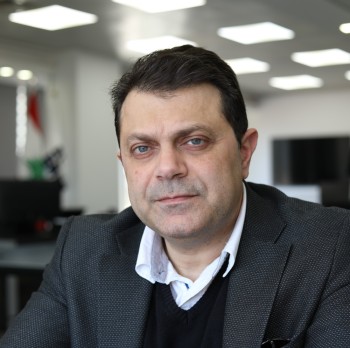The dimensions of the new Israeli aggression against Lebanon are becoming increasingly clear, with its peak being the assassination of Hezbollah’s Secretary-General, Sayed Hassan Nasrallah, during the night of Friday to Saturday, September 27-28, 2024. Israel has announced that its goal is not only to push Hezbollah 10 kilometers away from the Lebanese border but also to completely disarm the movement. This move coincided with the Lebanese government’s announcement of the full implementation of Resolution 1701, which includes disarming Hezbollah and deploying the Lebanese army to the south to secure the borders. In practice, this would strip the Islamic resistance of its key card in the conflict with Israel, marginalizing Lebanon in the Arab-Israeli conflict. It could also close the last window of support for the Palestinian resistance, thus halting resistance movements in the West Bank and Gaza.
In this context, American and French officials have issued statements calling for the election of a moderate, non-confrontational candidate for the Lebanese presidency. These statements have resonated with the Lebanese camp opposed to Hezbollah, which feels emboldened by the announcement of additional U.S. and British troops being sent to Cyprus, "to closely monitor the situation and intervene if necessary to protect Western interests in the region." All of this suggests that the United States is attempting to achieve what it failed to accomplish in the past: placing Lebanon entirely under its tutelage.
This scenario is reminiscent not only of the upheaval in Lebanon in 2005 after the assassination of former Prime Minister Rafic Hariri and the failure of the 2006 Israeli aggression but also of the 1982 Israeli invasion. It should be noted that the 1982 invasion was planned by Israel right after signing a peace agreement with Egypt in 1979. Its goal was to eliminate the rising Palestinian resistance in the West Bank and Gaza, deal a severe blow to the resistance in Lebanon, and place Bachir Gemayel, an Israeli ally, in the Lebanese presidency to push Lebanon into signing a peace deal with Israel.
These objectives bear a striking resemblance to those of the current Israeli aggression against Lebanon. As in 1982, the United States has given its green light and provided not only political but also military support, sending, along with France, the UK, and Italy, multinational forces to support the Lebanese army under President Amin Gemayel, elected after his brother Bachir's assassination. At the time, much of the Lebanese political class, across various sects, supported Bachir and later Amin, seeking to preserve their interests by aligning with American tutelage.
The 1982 invasion also had a regional dimension aimed at weakening the Palestinian resistance, reducing Syrian influence in Lebanon, and paving the way for normalization with Saudi Arabia as part of a broader American-Israeli project for domination in the Middle East. This involved redefining the geopolitics of the Levant by fragmenting Lebanon, Syria, and Iraq into sectarian states, a project envisioned by neoconservatives in a document published shortly before the invasion. The ultimate goal was to turn the Middle East into a base to encircle the Soviet Union from the south, while the United States supported "color revolutions" against Moscow in Eastern Europe.
Today, the objective of the U.S. and Israel in their aggression against Lebanon goes beyond the simple pretext of "sending settlers back to their colonies in Galilee," which Israel used in 1982 to invade Lebanon. It also aims to suffocate Palestinian resistance in Gaza and the West Bank by cutting off its last lifeline through Lebanon, while fostering normalization with Arab states, particularly Saudi Arabia. The ultimate aim is to weaken Hezbollah, Iran’s main ally, thereby preventing Tehran from accessing the Eastern Mediterranean and maintaining its links with the Palestinian resistance and the Houthis in Yemen. This plan also seeks to limit Iranian influence to parts of Iraq and divide Lebanon, Syria, and Iraq into sectarian entities, transforming the Middle East into a base for encircling Russia, as the U.S. conducts a proxy war against Moscow in Ukraine.
In 1982, the U.S. failed to achieve its objectives, thanks to Syrian support for the factions opposing President Amin Gemayel, which disrupted American plans in the region. This support was made possible by the backing of the late Soviet leader Yuri Andropov to Syrian President Hafez al-Assad, as well as the blows dealt to the Israeli occupation by the Lebanese resistance, which later coalesced around Hezbollah, and by Islamist factions.
Today, will Russia intervene to support Iran, which has replaced Syria in Lebanon since 2005, and thwart the Israeli-American project in Lebanon? Will Hezbollah manage to resist the Israeli occupation forces?
Please post your comments on:
[email protected]
 Politics
Politics














